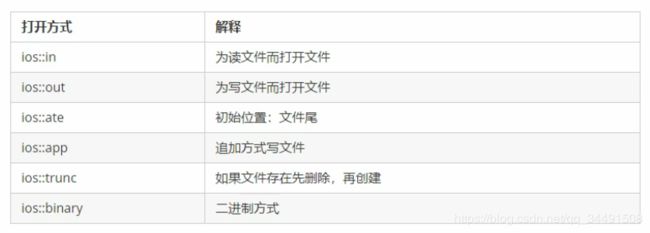原文地址http://www.javayihao.top/detail/168
一:概述
1.程序在运行中产生的数据都是临时数据,程序一旦运行结束会被释放,可以通过文件相关的操作将数据持久保存。
2.文件类型有文本文件(文件以文本的ASCLL码形式存储在计算机中)和二进制文件(文件以文本的二进制形式存储在计算机中,用户一般直接读不懂他们)。
3.C++中对文件操作需要包含头文件
二:文本文件读写操作
写文件
第1步:包含头文件#include
第2步:创建流对象ofstream ofs
第3步:打开文件ofs.open("文件路径",打开方式)
第4步:写文件ofs<<"写入数据"
第5步:关闭文件ofs.close()
注意:
1.文件的打开方式
2.打开方式可以通过|操作符配合使用,如打开二进制写文件 ios::binary|ios:out
3.创建流对象ofstream也可以选择fstream读写类
案例代码
读文件
第1步:包含头文件#include
第2步:创建流对象ifstream ifs
第3步:打开文件ifs.open("文件路径",打开方式)判断是否打开成功,打开方式和上面写文件一样
第4步:读数据
第5步:关闭文件ifs.close()
案例代码
注意:第4步读数据方式有四种。其他三种如下
三:二进制文件读写操作
1.二进制方式对文件操作,打开方式指定为ios::binary,二进制文件不仅可以对内置数据类型的数据操作,还可以对对象类型操作。
2.写入的二进制文件出现乱码不用处理,只要读到的正确即可
写文件
读文件

